Duomo di Padova
- Maria Scuor
- Sep 18
- 13 min read
Scorri a basso per l’italiano
Duomo di Padova or The Cathedral Basilica of Santa Maria Assunta simply known by the people of Padua as the Duomo, is dedication to the Assumption of Mary and it overlooks Piazza Duomo and is next to the Bishopric complex (Bishop’s Palace). According to tradition, the original cathedral dates back to the 4th century and was originally dedicated to Saint Justina and is marked today by a stone column surmounted by a cross in the current courtyard.
But there seems to be more questions than answers on the other cathedrals built on this property. One built by Bishop Tricidio around the year 620, then rebuilt another in 900 because it had burned down. Then in 1075 there is documentation that Bishop Olderico consecrated a cathedral built on the previous ruins. Then in the between the 17th and 19th century, historians hypothesized there was a building was facing east, which had a confessional and a crypt where Bishop Tricidio was buried. His tombstone, along with ruins and niches were unearthed during the foundation of the current façade. But the building of 1075 fell after the famous earthquake of January 3, 1117.
The University of Padua excavated the area between 2011 and 2012 and dismantled many of the previous hypotheses and more questions were raised. They found significant finds dating back from the 4th-5th century, 9th-12th century and many tombs. However, due to lack of funding, there is still more work to be done to confirm all the findings.
After the earthquake a new cathedral was built but unclear if it was built on the ruins of the previous one or a new location to accommodate the creation of the square and large courtyard. This cathedral was consecrated on April 24, 1180. This cathedral does stand on the site of the current cathedral and the bell tower was built in 1227 and Bishop Stefano da Carrara commissioned a restoration; embellishment works and construction of cross vaults in 1399.
On May 6, 1522, Cardinal Francesco Pisani blessed the first stone for a more modernized church with a large presbytery. It took until 1582 for the new presbytery to be inaugurated. Then the old medieval bell tower was demolished and new one built along with the extension of the old façade. By 1683 the right arm of the transept was constructed then in 1693 the left arm, which led to remains of the old cathedral to be slowly demolished to be occupied by the new naves. It wasn’t until August 25, 1754 that Cardinal Carlo Rezzonico consecrated the new cathedral, which received title of minor basilica. Then in 1756 the construction of the main dome began.
The exterior has the Basilica within the cathedral rising between the episcopal place and the baptistery. It has a Latin cross plan with an octagonal lantern tower and a lead-covered dome covers the transept crossing. There is the sacristy of the Canons on one side of the presbytery and the sacristy of the Prebendates on the other side of the presbytery. The side doors open to the small courtyard of the rectory.
The bell tower rises between the Prebendates sacristy and is made of mutilated Roman stone. It has seven bells in the Veronese system, 6 in the scale of C + piccolo. They were cast in 1923 by the Pontifical Foundry Daciano Colbachini and Sons. The façade, which is unfinished has three portals, a large classical pediment supported by six Corithian semi-columns. After a bomb struck the façade in World War 1, the small rose window was added.
On the inside the space is bright and harmoniously dived into three naves by pillars. As we enter the main door, the two large domes open into a central nave; one over the chapels of San Gregorio and San Lorenzo is elliptical in shape and the larger circular dome is over the transept. Chapels open along the side naves and beneath the presbytery are the crypt and Chapel of the Holy Cross.
The Chapel of our Lady of Miracles was designed in 1647, and there is a Byzantine-style Icon displayed that was bequeathed to the cathedral by a canon in the 13th century. It depicts the Virgin with Baby Jesus in swaddling clothes. This is believed to be the work of Saint Luke. However, in 1647 the original was ruined and therefore the one displayed is a copy.
The presbytery has a 17th century Baroque monument to Cardinal Pietro Valier and a monument to Bishop Francesco Scipione Dondi dall’Orologio. The high altar was consecrated in 1770 and the wooden choir is the work of Filippo Parodi and on the ground, there is a commemorative plaque with the year 1698, the year the seats and flooring were completed.
In 1996 the new presbytery was created for the occasion of the third centenary death of Saint Gregory Barbarigo. The work was on the altar, pulpit, the cathedra and the crucifix were the work of Giuliano Vangi. The new space is made of Carrara marble and nothing old was removed. Only the balustrades were resized and replaced. The funky looking statues of the four protectors of Padua are depicted on the entrance steps and have been met with mixed reviews, which I get because they just don’t look right.
Next to the presbytery, are the stairs to the crypt. This is where the urn holding the body of the 4th century Paduan martyr of Saint Daniel is as well. The Chapel of the Holy Cross which is covered in marble and stucco dates back to 1676 and is the burial place of the bishops of Padua.
The Chapel of the Blessed Sacrament is an altar by Massari and features bronze panels, including a Last Supper. The funerary monument of Cardinal Pileo da Prata is from the early 15th century and is in hyperrealist Gothic style. To the left is the elegant tomb of Bishop Pietro Barozzi.
On the left aisle we see:
The large wooden pulpit
Monument to Canon Francesco Petrarca and a plaque commemorating the visit of Pope Pius VI in 1782
The Chapel of San Giuseppe has a large altar with an altarpiece depicting the Virgin Enthroned with Saints Cesareo and Joseph
The Chapel of the Madonna of the Blind has a white marble altar and a 15th century panel, depicting the Virgin and Child Jesus
The Chapel of San Gerolamo with the altarpiece of Saint Jerome striking himself with a stone
The Chapel of San Gregorio Barbarigo was restored in 1997 and has the preserved body of the saint, Bishop of Padua since the time of his beatification. The altar was designed by Giorgio Massari. There is a marble stature and a bust of the saint as well as bronze busts of patron saints of Padua. Bishop Sante Veronese is buried on the floor in front of the altar.
The cathedral held the oldest musical chapel (organizational structure that allowed music to be performed in a specific intuition) in the world. However, it was abolished in the mid-20th century. The Chapter of Canons, which appointed the choirmaster and musicians was established in the 13th century but their golden age was between 13th and 15th centuries. The rich musical collection from that period is preserved in the chapter library. After years of neglect, the cathedral now has a musical service in the “Cathedral Musical Chapel” which was made official by Bishop Antonio Mattiazzo in 2015.
Documents show there were pipe organs that date back to 1493, renovated in 1648 and when the choir was enlarged in 1700 the organ was radically restored in 1756. These were removed in 1790 and two new instruments were added to each side of the high altar, which were inaugurated in 1791. They were built by Gaetano Callido, who installed a two-manual organ, wit a pedalboard and a single-manual choral organ without pedalboard. However, these were not adequate for the grandness of the room. In 1846 they were restored and enlarged.
By the mid-19th century, the organ was replaced with a three-manual mechanical organ and inaugurated on June 11 1907. But again, this fell into disuse that new organs were placed on either side of the choir. In 1922, the Gospel case of the small instrument was freed and given to the little parish in Faedis, we pass this this little town on our drive up to Prossenicco. In 1958 the organ was purchased by the parish of San Luca di Tribano and replaced with a new instrument made by the Tamburini company.
This organ had the epistle and gospel sections electrified and a new structure was installed. The 5,380 pipes were controlled by a single 4-manual console in the presbytery. It had 91 stops of which 63 were real and remained in use until 1999 until the Zanin company began a major renovation of the Tamburini organ in 2001.
Zanini reorganized the pipes and relocated the extracted sound material to 2 new bodies located on the floor of the presbytery. An additional organ was installed in the transept to augment the existing pedal organ. The new large organ was inaugurated on April 11, 2010 and boast the original monumental console from the Tamburini company, has four keyboards of 58 notes each and a straight pedalboard of 32 notes. It is radio-controlled and controls 4,968 pipes: the ones relating to manuals l, ll and lll and the pedal are located in the twin choirs of the presbytery, while the pipes of manual lV are in the new cases of the presbytery.
In the transept there is a second portable pipe organ which was built in 1999 by Francesco Zanin to replace the main organ that was being restored. After the completion of the main organ, it has remained in use for the purpose of accompanying the choir. It is mechanically operated with a single 54-note keyboard and 30-note pedalboard.
The cathedral’s baptistery is located to the right of the cathedral and dates back to the 12th century and was consecrated by Guido patriarch of Grado in 1281. The baptistery has gone through several renovations over the centuries and also holds the Carraresi mausoleum. An aristocratic Padual family of the post-Lombard era who controlled Padua between 1318 and 1405.
Exterior photos - Foto esterne
Interior photos - Foto interne
Duomo di Padova
Il Duomo di Padova o Basilica Cattedrale di Santa Maria Assunta conosciuta dai padovani semplicemente come Duomo, è dedicata all'Assunzione di Maria e si affaccia su Piazza Duomo e si trova accanto al complesso vescovile (Palazzo Vescovile). Secondo la tradizione, la cattedrale originaria risale al IV secolo ed era originariamente dedicata a Santa Giustina ed è oggi contrassegnata da una colonna in pietra sormontata da una croce nell'attuale cortile.
Ma sembra che ci siano più domande che risposte sulle altre cattedrali costruite su questa proprietà. Una costruita dal vescovo Tricidio intorno all'anno 620, poi ricostruita un'altra nel 900 perché era andata a fuoco. Poi, nel 1075, ci sono documenti che attestano che il vescovo Olderico consacrò una cattedrale costruita sulle rovine precedenti. Dopo, tra il XVII e il XIX secolo, gli storici hanno ipotizzato che ci fosse un edificio rivolto a est, che aveva un confessionale e una cripta dove fu sepolto il vescovo Tricidio. La sua lapide, insieme a rovine e nicchie, sono state portate alla luce durante la fondazione dell'attuale facciata. Ma l'edificio del 1075 crollò dopo il famoso terremoto del 3 gennaio 1117.
L'Università di Padova ha scavato l'area tra il 2011 e il 2012 e ha smantellato molte delle ipotesi precedenti e sono state sollevate altre domande. Sono stati trovati reperti significativi risalenti al IV-V secolo, IX-XII secolo e molte tombe. Tuttavia, a causa della mancanza di fondi, c'è ancora molto lavoro da fare per confermare tutti i risultati.
Dopo il terremoto fu costruita una nuova cattedrale ma non è chiaro se sia stata costruita sulle rovine della precedente o una nuova sede per accogliere la creazione della piazza e del grande cortile. Questa cattedrale fu consacrata il 24 aprile 1180. Questa cattedrale sorge sul sito dell'attuale cattedrale e il campanile fu costruito nel 1227 e il vescovo Stefano da Carrara ne commissionò un restauro; lavori di abbellimento e costruzione di volte a crociera nel 1399.
Il 6 maggio 1522 il cardinale Francesco Pisani benedisse la prima pietra per una chiesa più modernizzata con un grande presbiterio. Ci volle fino al 1582 per l'inaugurazione del nuovo presbiterio. Successivamente fu demolito il vecchio campanile medievale e ne fu costruito uno nuovo insieme all'ampliamento della vecchia facciata. Nel 1683 fu costruito il braccio destro del transetto, poi nel 1693 il braccio sinistro, che portò alla lenta demolizione dei resti della vecchia cattedrale per essere occupata dalle nuove navate. Solo il 25 agosto 1754 il cardinale Carlo Rezzonico consacrò la nuova cattedrale, che ricevette il titolo di basilica minore. Poi nel 1756 iniziò la costruzione della cupola principale.
L'esterno presenta la Basilica all'interno della cattedrale che si eleva tra la piazza episcopale e il battistero. Ha una pianta a croce latina con una torre a lanterna ottagonale e una cupola rivestita di piombo copre l'incrocio del transetto. C'è la sacrestia dei Canonici da un lato del presbiterio e la sacrestia dei Prebendati dall'altro lato del presbiterio. Le porte laterali si aprono sul piccolo cortile della canonica.
Il campanile si erge tra la sacrestia delle Prebendate ed è realizzato in pietra romana mutilata. Ha sette campane nel sistema veronese, 6 nella scala di Do+ ottavino. Furono fuse nel 1923 dalla Pontificia Fonderia Daciano Colbachini e Figli. La facciata, che è incompiuta, presenta tre portali, un grande frontone classico sorretto da sei semicolonne corithiane. Dopo che una bomba colpì la facciata durante la prima guerra mondiale, fu aggiunto il piccolo rosone.
All'interno lo spazio è luminoso e armoniosamente suddiviso in tre navate da pilastri. Mentre entriamo dalla porta principale, le due grandi cupole si aprono in una navata centrale; una sopra le cappelle di San Gregorio e San Lorenzo è di forma ellittica e la cupola circolare più grande si trova sopra il transetto. Lungo le navate laterali si aprono cappelle e sotto il presbiterio si trovano la cripta e la Cappella di Santa Croce.
La Cappella della Madonna dei Miracoli fu progettata nel 1647 e al suo interno è esposta un'icona in stile bizantino, lasciata in eredità alla cattedrale da un canonico nel XIII secolo. Raffigura la Vergine con Gesù Bambino in fasce. Si ritiene che questa sia opera di San Luca. Tuttavia, nel 1647 l'originale era rovinato e quindi quello esposto è una copia.
Il presbiterio conserva un monumento barocco seicentesco al cardinale Pietro Valier e un monumento al vescovo Francesco Scipione Dondi dall'Orologio. L'altare maggiore fu consacrato nel 1770 e il coro ligneo è opera di Filippo Parodi e sul pavimento si trova una lapide commemorativa con l'anno 1698, anno in cui furono completati i sedili e la pavimentazione.
Nel 1996 è stato creato il nuovo presbiterio in occasione del terzo centenario della morte di San Gregorio Barbarigo. L'opera dell'altare, del pulpito, della cattedra e del crocifisso sono opera di Giuliano Vangi. Il nuovo spazio è realizzato in marmo di Carrara e nulla di vecchio è stato rimosso. Solo le balaustre sono state ridimensionate e sostituite. Le buffe statue dei quattro protettori di Padova sono raffigurate sui gradini d'ingresso e hanno ricevuto recensioni contrastanti, che capisco perché non mi sembrano adatte.
Accanto al presbiterio, si trovano le scale che portano alla cripta. Qui si trova anche l'urna che contiene il corpo del martire padovano del IV secolo di San Daniele. La Cappella di Santa Croce, rivestita in marmo e stucco, risale al 1676 ed è il luogo di sepoltura dei vescovi di Padova.
La Cappella del Santissimo Sacramento è un altare del Massari e presenta formelle in bronzo, tra cui l'Ultima Cena. Il monumento funebre del cardinale Pileo da Prata risale agli inizi del XV secolo ed è in stile gotico iperrealista. A sinistra si trova l'elegante tomba del vescovo Pietro Barozzi.
Sulla navata sinistra vediamo:
Il grande pulpito ligneo
Monumento al canonico Francesco Petrarca e lapide che ricorda la visita di papa Pio VI nel 1782
La Cappella di San Giuseppe presenta un grande altare con una pala raffigurante la Vergine in trono con i Santi Cesareo e Giuseppe
La Cappella della Madonna dei Ciechi ha un altare in marmo bianco e una tavola del XV secolo, raffigurante la Vergine e Gesù Bambino
La Cappella di San Gerolamo con la pala d'altare di San Girolamo che si colpisce con una pietra
La Cappella di San Gregorio Barbarigo è stata restaurata nel 1997 e conserva il corpo conservato del santo, Vescovo di Padova fin dai tempi della sua beatificazione. L'altare fu progettato da Giorgio Massari. Vi si trovano una statua marmorea e un busto del santo oltre a busti bronzei dei santi patroni di Padova. Il vescovo Sante Veronese è sepolto sul pavimento davanti all'altare.
La cattedrale ospitava la più antica cappella musicale (struttura organizzativa che permetteva di eseguire la musica secondo una precisa intuizione) del mondo. Tuttavia, è stato abolito a metà del XX secolo. Il Capitolo dei Canonici, che nominava il maestro del coro e i musicisti, fu istituito nel XIII secolo, ma la loro età d'oro fu tra il XIII e il XV secolo. La ricca collezione musicale di quel periodo è conservata nella biblioteca capitolare. Dopo anni di abbandono, la cattedrale ha ora una funzione musicale nella "Cappella Musicale della Cattedrale" che è stata ufficializzata dal vescovo Antonio Mattiazzo nel 2015.
Documenti dimostrano che esistevano organi a canne che risalgono al 1493, rinnovati nel 1648 e quando il coro fu ampliato nel 1700 l'organo fu radicalmente restaurato nel 1756. Questi furono rimossi nel 1790 e due nuovi strumenti furono aggiunti ai lati dell'altare maggiore, che furono inaugurati nel 1791. Erano costruite da Gaetano Callido, che installò un organo a due tastiere, con pedaliera e un organo corale a una sola mano senza pedaliera. Tuttavia, questi non erano adeguati per la grandezza della stanza. Nel 1846 era restaurate e ampliate.
Entro la metà del XIX secolo, l'organo fu sostituito con un organo meccanico a tre tastiere e inaugurato l'11 giugno 1907. Ma ancora una volta, questo cadde in disuso e nuovi organi furono collocati su entrambi i lati del coro. Nel 1922, la custodia del Vangelo del piccolo strumento fu liberata e donata alla piccola parrocchia di Faedis, passiamo davanti a questo piccolo paese nel nostro viaggio fino a Prossenicco. Nel 1958 l'organo fu acquistato dalla parrocchia di San Luca di Tribano e sostituito con un nuovo strumento realizzato dalla ditta Tamburini.
Questo organo ha avuto le sezioni dell'epistola e del vangelo elettrificate ed è stata installata una nuova struttura. Le 5.380 canne erano comandate da un'unica consolle a 4 manuali nel presbiterio. Aveva 91 registri di cui 63 veri ed è rimasto in uso fino al 1999 fino a quando la ditta Zanin ha iniziato un'importante ristrutturazione dell'organo Tamburini nel 2001.
Zanini ha riorganizzato le canne e ricollocato il materiale sonoro estratto in 2 nuovi corpi situati sul pavimento del presbiterio. Un organo aggiuntivo è stato installato nel transetto per aumentare l'organo a pedali esistente. Il nuovo grande organo è stato inaugurato l'11 aprile 2010 e vanta la consolle monumentale originale della ditta Tamburini, ha quattro tastiere da 58 note ciascuna e una pedaliera diritta da 32 note. E' radiocomandato e comanda 4.968 canne: quelle relative ai manuali l, ll e lll e al pedale si trovano nei cori gemelli del presbiterio, mentre le canne del manuale lV si trovano nelle nuove casse del presbiterio.
Nel transetto si trova un secondo organo a canne portatile costruito nel 1999 da Francesco Zanin in sostituzione dell'organo principale in fase di restauro. Dopo il completamento dell'organo principale, è rimasto in uso allo scopo di accompagnare il coro. È azionato meccanicamente con una singola tastiera a 54 note e una pedaliera a 30 note.
Il battistero del duomo si trova a destra della cattedrale e risale al XII secolo e fu consacrato da Guido, patriarca di Grado, nel 1281. Il battistero ha subito diversi rifacimenti nel corso dei secoli e ospita anche il mausoleo dei Carraresi. Famiglia aristocratica paduale di epoca post-longobarda che controllò Padova tra il 1318 e il 1405.










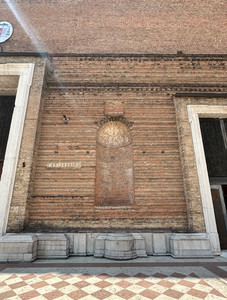



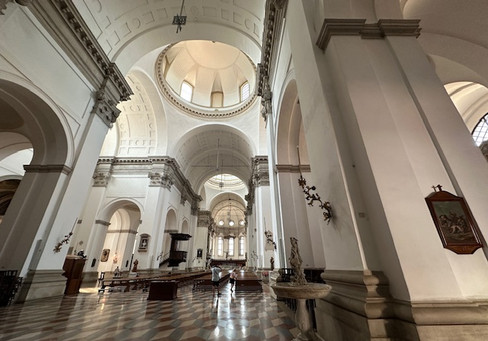


















































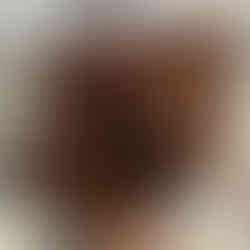




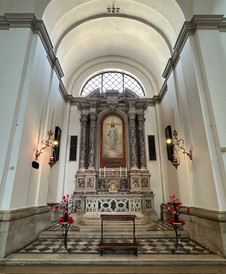






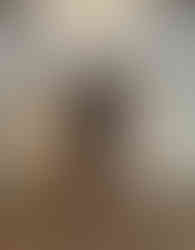








Comments